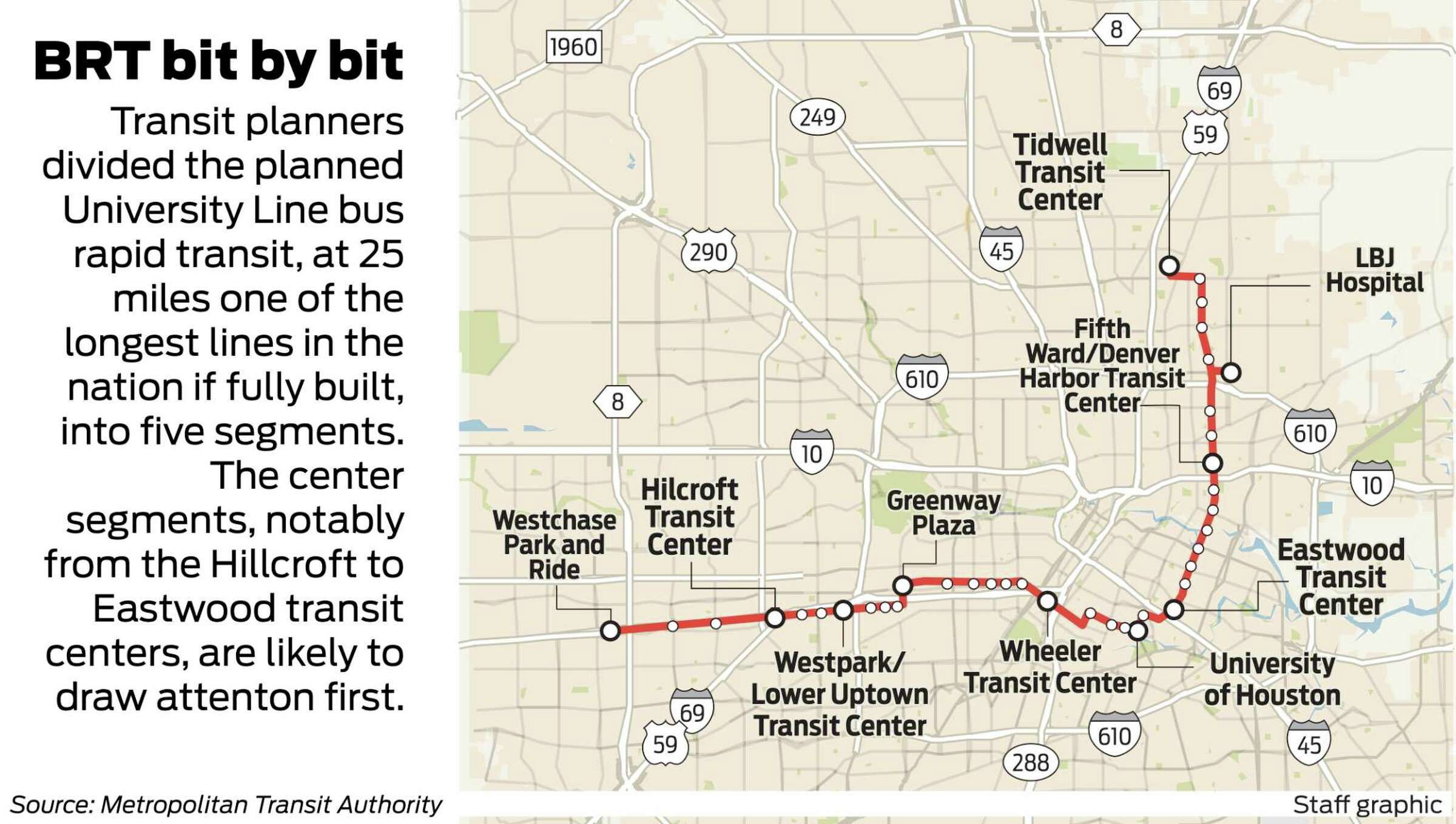A big step forward, but there are many miles yet to go.
The biggest of Metro’s big bus offerings is about to turn from lines on a map to a full-fledged discussion for Houston residents, as transit officials prepare for the first round of public meetings over the planned University Line.
Just don’t expect fast action on what could be the spine of Metro’s east-west mass transit system. A host of hurdles remain for the bus rapid transit planned between northeast Houston and Westchase, including segments similar to those proposed 15 years ago that ran into a buzzsaw of opposition in some Houston neighborhoods. Elected officials at the time took that opposition and clamped off funding for the project.
Public meetings start Tuesday, with two evening events planned. Nine more meetings follow, where residents can look at display boards of where the Metropolitan Transit Authority proposes widening local streets to allow for bus-only lanes and dedicated stations similar to rail where passengers will enter and exit the 60-foot buses that operate the line.
The meetings are not detailed designs, but a chance for the community to evaluate the plans and offer suggestions of where and what Metro should build to best serve riders, who might not hop onto the buses for a decade or more in some spots. Construction is not likely to happen before 2025, if then, with opening day in 2029 at a cost of $2 billion or more.
“This is a complicated engineering project. It’s going to take some time,” Metro chairman Sanjay Ramabhadran said.
The line, likely built in five phases, would be among the largest BRT lines in the nation, stretching more than 25 miles from the Tidwell Transit Center near Loop 610 and Interstate 69 to Westchase. Metro’s preferred route uses Lockwood to travel through Denver Harbor and Fifth Ward to the Eastwood Transit Center, then jogs through Third Ward with stops at the University of Houston and Texas Southern University. Following Alabama and Wheeler, the line crosses Midtown at the Wheeler Transit Center using Richmond before turning south at Edloe. From there, the buses would use their own lanes along Westpark Drive to Westchase.
The length, combined with the complexity of building practically anything in the densest parts of the Houston region, makes the project monumental to plan but also critical to tying together a growing but gap-riddled reliable bus network across an area built for the automobile.
“There are multiple pieces to the puzzle,” Ramabhadran said. “We are going to be crossing every highway in the region with the exception of (U.S.) 290.”
Information about the public meetings can be found here. The goal is to submit a proposal for funding to the Federal Transit Administration by August to get in line for funding. After that, we’ll see. Just remember as you look at all this, if we lived in a world where John Culberson never existed, we might already have a light rail line in this corridor right now. We can’t turn back the clock, but we can at least get this project on track, as it were. Attend a meeting if you can, and show your support for making it a little easier to get around town.


We live a block off Lockwood now so are pretty excited about this project. Managing train crossings without wrecking the streetscape is going be a challenge though.